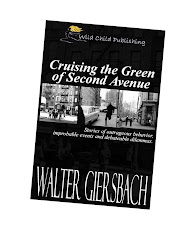A
curious thing took place at our dining room table sometime in the late 1940s. Our meat-and-potatoes supper changed into
something my mother called “creative cooking.”
Even though I was just 10 years old, and a boy at that, I sensed every woman
was out to prove she wasn’t a boring cook.
When my mother wasn’t exchanging 3 x 5-inch recipe cards with her
friends, they were promising each other recipes or were collecting recipes for
a new church cookbook. In fact, church
dinners were a command performance that made me dread the experimental dishes —
Mexican tamale pie or Italian sausage and mushroom casserole — placed in front
of me.
It’s
clear now what was happening. World War
II was finally over, anything was possible, and miracles could emerge from the
kitchen — amazing dishes like Indian curry that were previously unknown in our
small Oregon town.
I’ll
never know where my mother learned about shrimp curry. Her exotic dish consisted of one can of
Campbell’s frozen condensed shrimp soup, thawed, heated, laced with curry
powder, and poured over rice.
Another
night, her quick and simple entrée might be Porcupine Balls. Leftover Uncle Ben’s rice was mixed with
ground beef, shaped into balls, drowned under a can of Campbell’s condensed
tomato soup, and baked in an oven.
Campbell’s
was a staple in our house. Condensed
mushroom soup was poured over pork chops before baking. Condensed tomato soup was served as a time-saving,
nutritious spaghetti sauce.
On
special occasions — after church or when relatives came to visit — dinner
started with cocktails. Since my parents
were teetotalers, cocktails consisted of a quart can of Campbell’s tomato
juice, liberally splashed with Worcestershire sauce and a very small dash of
Tabasco, and served up with Ritz crackers and onion dip. The dip was a touch of class. It meant buying a container of sour cream and
mixing in a package of Lipton instant onion soup.
This
cozy tradition lasted until after I was married with children and began
substituting wine for tomato juice.
Memories
of these meals flooded back when I found three metal boxes where Mom stored
her recipe cards. I had almost forgotten
what a basic commodity Jell-O was in the late ’40s. An entire section of one box — dozens of gummy
recipe cards — were dedicated to gelatin salads. There were Perfection Salad (gelatin with
peppers, pimentos, chopped cabbage and diced celery) and Fruit Salad (gelatin
with a cup of unnamed dressing, cherries, pineapple and marshmallows). And there were Stuffed Eggs in Gelatin
Mayonnaise, Shrimp and Swiss Cheese Gelatin Salad, Cranberry Orange Mold, and
Crunchy Corned Beef Salad Loaf.
 |
| Judy's recipe library. |
Though
Mom passed away years ago, her recipe box is an archeological treasure of how
Jell-O sustained our family.
As
I recalled those meals, I realized this was my definition of comfort food. Bland, often mysterious, but probably
nutritious. The period marked a
transition from cooking with raw materials to using processed
food. The tin recipe boxes also offered
an insight into how hard women worked to be inventive and to change food
presentation after a long war and years of rationing.
Before
Julia Child there was Betty Crocker.
Before Rachel Ray there was an underground exchange of family-tested
recipes. The early ’50s was a time when
a new dish could be invented and called Something-something
Surprise. Creativity lay in the
naming. There was Feathered Lemon Delight (fried chicken), Snip
Doodles (cookies), and Snickerdoodle (coffee cake).
Before Hamburger Helper,
there was the slice of bread crumbled into a pound of ground beef to make
meatloaf stick together and go farther.
Before
the Nabisco and General Foods snack foods, there were Mom’s Gizzies, a
Christmas treat made in vast quantities with Wheat Chex, Cheerios, pretzel
sticks, and nuts, all laced with Worcestershire sauce, Tabasco and celery salt,
and baked for one hour. For kid treats,
there was our all-time cavity-inducing favorite: Rice Krispie cookies made with
marshmallows.
Pizza was another
novelty first mentioned by my sixth-grade teacher. I had my first taste of pizza — oh, the
rapture — when I was 13 years old and had moved to New Jersey.
When
my wife, Judy, spotted Ming Tsai’s honey-roasted poussin on horseradish beet purée with
soy butter sauce on Food TV, she told me to run and download it from the Web
site. Then, she cut back on one
ingredient, added another condiment, or substituted an item.
“This
is not comfort food,” I said. “I’ve never eaten a beet in my life.” But at dinner that night the honey-roasted
poussin was so mind-numbingly good that I grabbed my camera to record it for the
cookbook we wrote for our children. Creativity
was alive and well in the 21st Century.
Often,
she and I went back to Mom’s old tin recipe boxes. It still held comfort food for a new
generation. In fact, it’s time for me to
make another few cubic feet of Gizzies for snacks before a baseball game. And I have the strangest craving for
raspberry cookies, almond crescents and lace cookies when holidays
approach. Our children and grandchildren
demand them.





